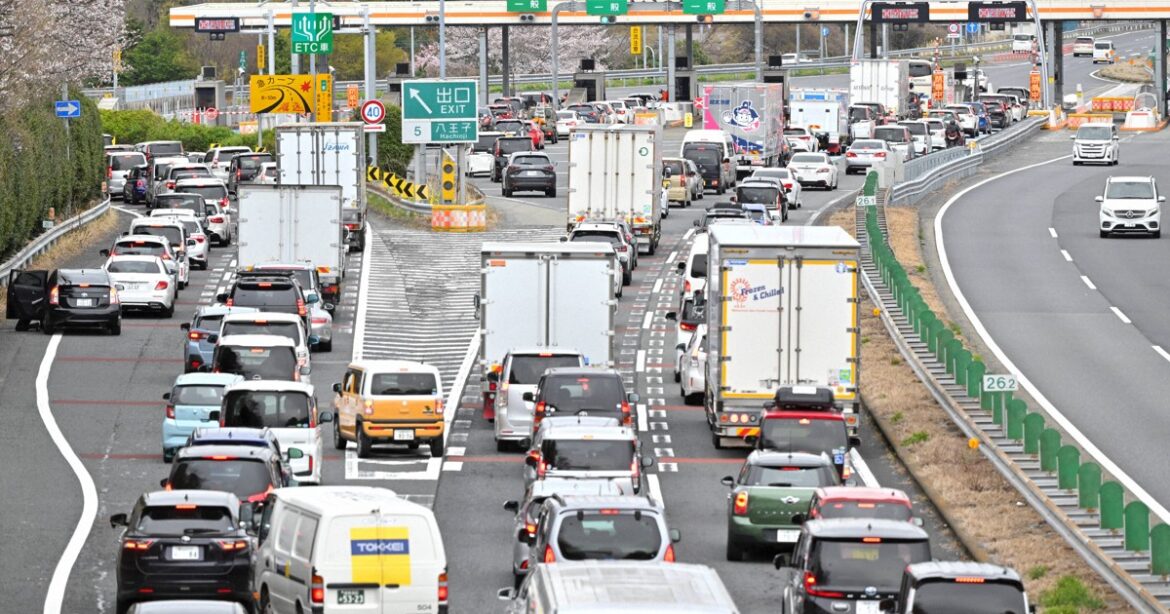
Traffic is seen backed up near the Hachioji tollgate on the Chuo Expressway due to an ETC toll collection system failure, on April 6, 2025. (Mainichi/Natsuki Nishi)
NAGOYA — Applications for deferred payment of expressway tolls following a major failure of Japan’s electronic toll collection (ETC) system in early April account for only about 3.8% of the estimated number of vehicles that passed through during the disruptions, it has emerged.
Central Nippon Expressway Co. (NEXCO Central) revealed April 18 that it had received about 36,000 applications to pay the tolls that should have been collected over the 38-hour outage.
During the same period a week before the system failure, some 960,000 vehicles passed through the same gates, and NEXCO Central believes the number subject to deferred payment is around the same level. But the actual number of applications for such payment so far has reached only around 3.8% of that figure.
Takuji Sasaki, NEXCO Central’s sales director, stated, “We will continue to call for payments, and if non-paying users can be identified, we may issue claims in the future.”
The system failure spread from about 12:30 a.m. on April 6, rendering the ETC system unusable at a total of 106 toll gates and smart interchanges across 17 routes including the Tomei and Chuo expressways in the eight prefectures of Tokyo, Kanagawa, Yamanashi, Shizuoka, Aichi, Gifu, Mie and Nagano. That afternoon, NEXCO Central took the unusual step of opening toll barriers at affected locations, allowing vehicles to pass with tolls to be paid later. Emergency restoration work was completed by 2 p.m. the following day.
As of the night of April 8, NEXCO Central said applications for deferred payment of tolls numbered about 24,000. By the night of April 15, the figure still stood at only around 36,000.
(Japanese original by Tsukamoto Kohei, Nagoya News Center)


AloJapan.com